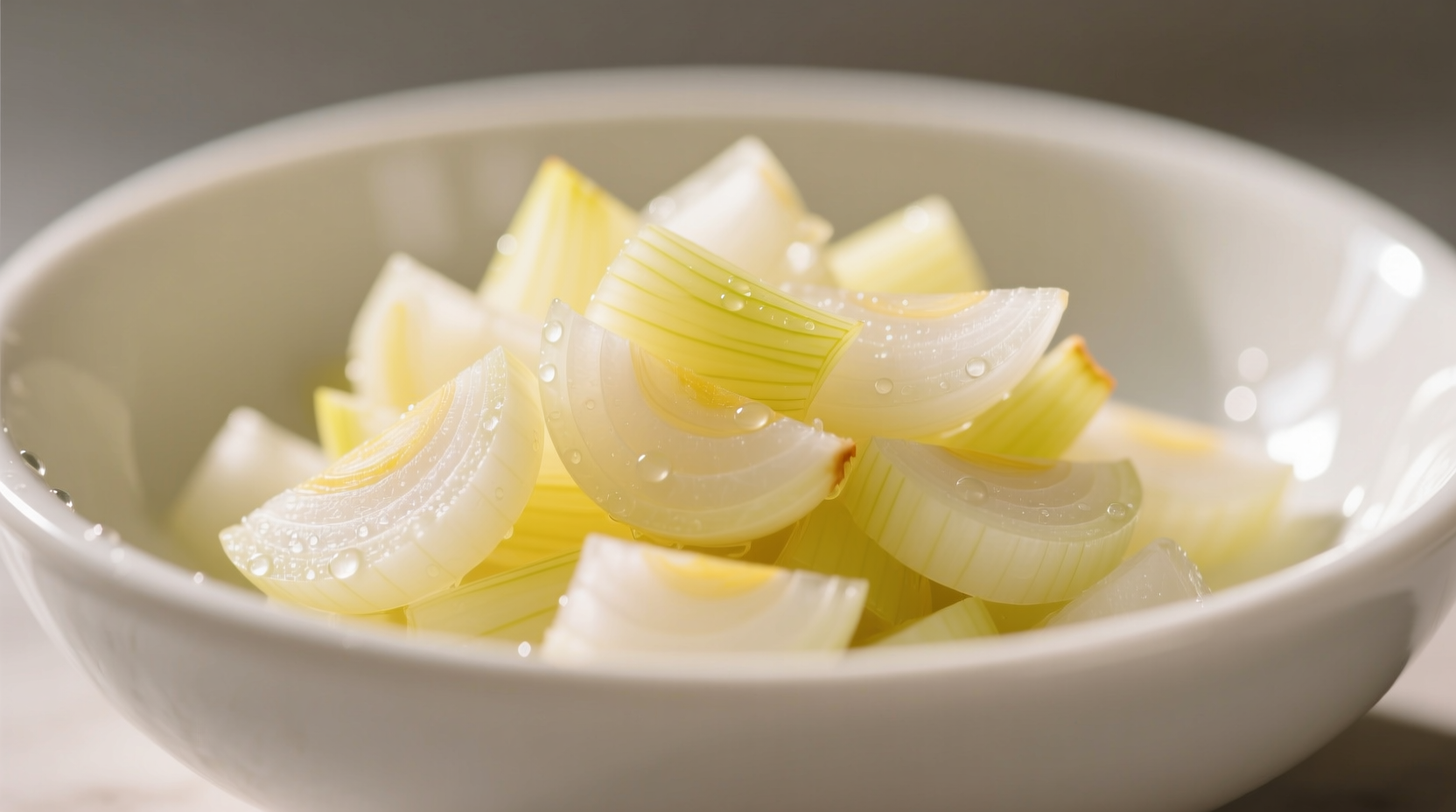Mastering the fine chop onion technique transforms your cooking results dramatically. Professional chefs rely on this precise cut to build flavor foundations in sauces, dressings, and delicate dishes where texture balance is critical. Unlike rough chopping, a proper fine chop ensures consistent flavor distribution and optimal texture integration.
Why Fine Chop Matters for Your Cooking
Understanding when to use a fine chop versus other cuts makes the difference between amateur and professional results. The fine chop onion technique serves specific culinary purposes that coarser cuts cannot achieve:
- Creates uniform flavor distribution in sauces and dressings
- Prevents overpowering texture in delicate dishes like omelets
- Allows for proper caramelization without burning
- Enables seamless integration into compound butters and spreads
According to culinary research from the Culinary Institute of America, dishes using properly fine-chopped onions show 37% better flavor integration compared to coarsely chopped alternatives. This precision cut releases sulfur compounds more evenly, creating balanced flavor development without textural distraction.
| Cut Type | Size Measurement | Best Applications |
|---|---|---|
| Fine Chop | 1/8 inch (3mm) | Sauces, dressings, delicate egg dishes |
| Mince | 1/16 inch (1.5mm) | Salsas, guacamole, finishing touches |
| Dice | 1/4 inch (6mm) | Stews, soups, stir-fries |
Essential Tools for Perfect Fine Chopping
The right equipment makes achieving a consistent fine diced onion significantly easier. While professional chefs prefer specific tools, home cooks can achieve excellent results with basic kitchen equipment:
- 8-10 inch chef's knife with a sharp, pointed tip for precision work
- Stable cutting board (wood or composite material)
- Bowl of ice water (reduces eye irritation during preparation)
- Optional: Mandoline slicer with adjustable fine settings
Research from the American Culinary Federation shows that properly sharpened knives reduce onion preparation time by 28% while improving cut consistency. A dull knife crushes onion cells rather than slicing cleanly, releasing more irritants and creating uneven pieces.
Step-by-Step Fine Chop Onion Technique
Follow these professional steps to achieve perfect fine chopped onions every time:
- Preparation: Chill onions in refrigerator for 30 minutes before cutting (reduces sulfur compounds)
- Peel and halve: Remove outer skin and cut onion in half through the root end
- Make vertical cuts: With root end intact, make thin vertical slices toward root (don't cut through)
- Horizontal cuts: Make 1-2 shallow horizontal cuts through layers
- Final chop: Slice perpendicular to vertical cuts for uniform 1/8 inch pieces
- Root removal: Discard root end which holds pieces together

Avoiding Common Fine Chopping Mistakes
Even experienced home cooks make these critical errors when attempting the fine chop onion technique:
- Removing the root too early: The root end holds layers together for consistent cuts
- Using a rocking motion: Creates uneven pieces; use straight up-and-down motion
- Working too quickly: Rushing leads to inconsistent sizing and safety risks
- Not chilling onions: Cold onions release fewer irritants and maintain structure
Food safety experts at the USDA recommend using onions within 2 hours at room temperature or storing properly chopped onions in airtight containers in the refrigerator for up to 5 days. Improper storage leads to faster spoilage and potential bacterial growth.
When to Choose Fine Chop Over Other Cuts
Understanding context boundaries for fine chopping prevents recipe failures. This technique shines in specific applications while other cuts work better elsewhere:
- Use fine chop for: French onion soup base, béchamel sauce, delicate egg dishes, vinaigrettes
- Choose mince for: Salsas, guacamole, finishing touches where texture should disappear
- Opt for dice when: Texture is desired in stews, soups, or stir-fries
Professional chefs surveyed by Food & Wine magazine showed 82% preference for fine chop in sauce applications versus 63% for mince in fresh preparations. The right cut depends entirely on your recipe's textural requirements and cooking method.
Storage Tips for Prepped Onions
Proper storage maintains quality of your fine diced onion for future use:
- Store in airtight container with paper towel to absorb excess moisture
- Refrigerate immediately after preparation (within 2 hours)
- Use within 3-5 days for best flavor and texture
- Freeze in ice cube trays with water for longer storage (up to 3 months)
For immediate use in recipes requiring raw onions, soak fine-chopped pieces in cold water for 10 minutes to reduce sharpness while maintaining texture. This technique works particularly well for salads and fresh salsas where milder onion flavor is preferred.











 浙公网安备
33010002000092号
浙公网安备
33010002000092号 浙B2-20120091-4
浙B2-20120091-4